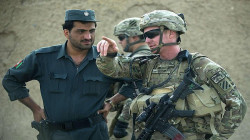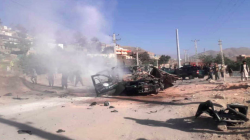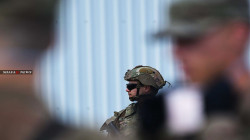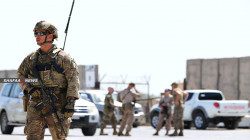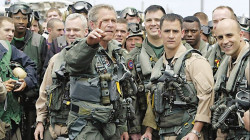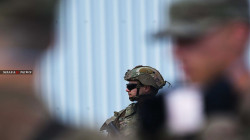The U. S. “Forever Wars” Are Ending, But the Fight Against Terrorists and Guerrillas Will Go On
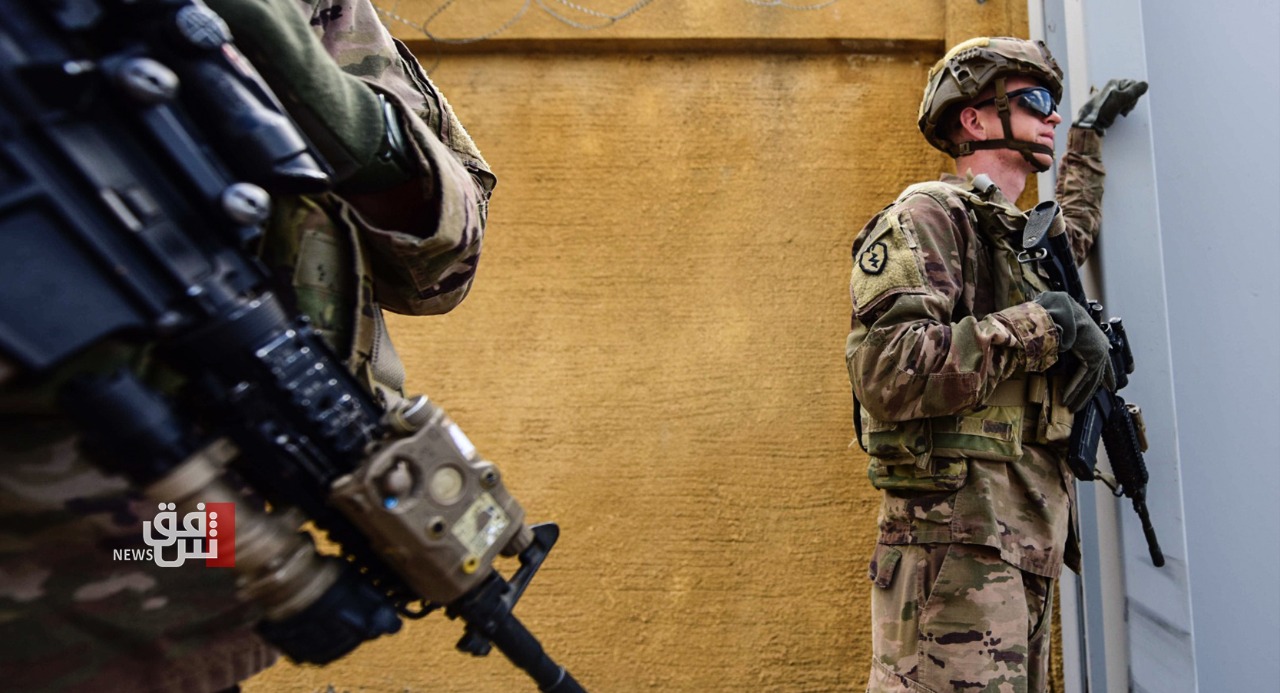
Shafaq news/ In 2006, when the U.S. war in Iraq was at its low point, the American military rediscovered counterinsurgency (COIN). This doctrine, developed in the 1950s by military innovators such as the British field marshal Gerald Templer in Malaya and the U.S. operative Edward Lansdale in the Philippines, holds that a military can’t defeat an insurgency by simply killing insurgents. In fact, by killing indiscriminately, one may actually create more enemies than one eliminates. The way to prevail, according to COIN doctrine, is to provide ordinary people with security and basic services. Doing so helps counterinsurgents earn people’s trust, making it more likely that they will provide the vital intelligence necessary to kill or capture hardcore insurgents without harming innocent civilians.
Two generals—David Petraeus of the U.S. Army and James Mattis of the U.S. Marine Corps—collaborated on a seminal field manual, published in December 2006, that popularized COIN thinking. In the years that followed, Petraeus applied COIN doctrine as commander of U.S. forces in Iraq. The “surge” he oversaw wound up reducing violence there by more than 90 percent. Although U.S. troops could not resolve underlying ethnosectarian tensions or turn Iraq into a model democracy, the short-term success of the surge sent COIN’s stock soaring throughout the U.S. national security establishment. Both Petraeus and Mattis would go on to lead U.S. Central Command (which is responsible for the Middle East) and serve at the highest levels of government: Petraeus as CIA director, Mattis as secretary of defense.
Petraeus also went on to command U.S. and international forces in Afghanistan in 2010–11, where he oversaw another troop surge. This one, however, did not produce results as dramatic as those in Iraq. Petraeus’s warning before taking the job—that Afghanistan “represents a more difficult problem set”—has been amply borne out. Now, after two decades of U.S. military involvement, U.S. President Joe Biden has decided to pull the remaining 3,500 U.S. troops out of the country despite the lack of progress in peace talks between the Afghan government and the Taliban. The Taliban appear stronger than ever and are poised for substantial gains on the ground. The U.S. intelligence community has warned that the entire country could fall under the group’s control within two to three years after the departure of international forces. If that were to occur, it would represent the United States’ most humiliating military defeat since the Vietnam War—where the enemy also won after U.S. troops pulled out.
Biden’s exit strategy from Afghanistan is premised on the need to focus on other priorities, especially managing Washington’s great-power competitions with China and Russia. The U.S. Marine Corps, which since the 1920s has seen itself as the United States’ premier “small war” force, has already reoriented toward an island-hopping campaign in the Pacific—a far cry from the COIN operations Marines not so long ago conducted in Iraq’s Anbar Province and Afghanistan’s Helmand Province.
Twenty years after the 9/11 attacks, the era of counterinsurgency is drawing to a close—and the COIN doctrine is fast losing influence in national security circles. It would be a grave mistake, however, to devalue COIN. There is no strategy better suited to confronting terrorists and guerrillas. If the United States forgets the precepts of COIN, as it did after the Vietnam War, it will pay a fearful price on future battlefields.
Before writing off COIN, it is worth noting that it actually worked in Afghanistan when and where the United States committed sufficient forces to implement it. Anyone who visited Helmand and Kandahar Provinces in 2011–12—the heyday of U.S. counterinsurgency efforts in Afghanistan—saw clear progress. Soldiers and marines cleared the Taliban from longtime redoubts and improved security conditions, albeit while sustaining considerable losses. General Stanley McChrystal, when he was the U.S. commander in Afghanistan from 2009–10, warned in a report that the Taliban were making such rapid gains that the U.S. operation in Afghanistan was in danger of “mission failure.” The troop surge ordered by President Barack Obama, which brought U.S. force levels to 100,000, averted that danger and rolled back Taliban advances.
The problem, however, was that security improvements were localized and did not last. The United States never committed enough forces to conduct COIN operations nationwide, and Obama, a critic of nation building, also insisted on sending additional troops to Afghanistan with an 18-month timetable attached. This predictably encouraged the Taliban to simply wait out the U.S. offensive and to move back into districts as soon as the United States pulled out. The drawdown deadline also sabotaged prospects for successful peace negotiations. As a Taliban leader supposedly said, “You have the watches, but we have the time.”
Twenty years after the 9/11 attacks, the era of counterinsurgency is drawing to a close.
The Pentagon hoped that U.S.-trained Afghan security personnel could replace U.S. forces as they withdrew, but the Afghan soldiers and police have consistently fallen short of those optimistic projections. On paper, the Afghan security forces have 300,000 personnel. The military’s actual size is considerably smaller; corrupt commanders often claim the pay of phantom troops. Afghan special operations units are the most capable element of the force, but filling in for low-quality police and army forces on the frontlines is running them ragged. Even after two decades, the Afghan military is nowhere close to being able to operate on its own. The United States not only pays salaries for Afghan troops but also helps them with logistics, intelligence, planning, and air support.
The limitations of the Afghan forces reflect deeper flaws in the Afghan government. U.S. plans to rapidly deploy public services in areas newly cleared of the Taliban seldom amounted to much. Today, the Afghan state remains riddled with corruption, factionalism, and incompetence. The government’s failures, in turn, have created an opening for the Taliban. If COIN is fundamentally a governance competition, it is one that the enemy has won in many rural parts of southern and eastern Afghanistan.
The final reason why COIN has not been more successful in Afghanistan is the presence of Taliban sanctuaries in Pakistan. Historically, no factor has correlated more closely with the success or failure of an insurgency than whether or not it has cross-border support. For the past 20 years, the United States has hoped that it could put an end to the support that Pakistan’s Inter-Services Intelligence agency has long offered the Taliban. But that never happened, in part because the Pakistanis have always seen the United States as a fickle ally (and understandably so). Taliban leaders continue to enjoy refuge in Pakistan, and even the group’s rank-and-file fighters can cross the border when they come under pressure in Afghanistan. This was the same advantage that the mujahideen enjoyed against the Soviet Red Army in the 1980s, and it proved equally important then.
COIN may have failed in Afghanistan, but it has proved more successful elsewhere. In recent decades, COIN operations produced notable gains for Israeli forces battling Palestinian militants during the second intifada from 2000 to 2005 and for Colombian security services who battled FARC (Revolutionary Armed Forces of Colombia) insurgents for more than 50 years until a 2016 peace agreement ended the civil war. In both cases, government forces provided around-the-clock security for civilians rather than simply trying to eliminate individual insurgents or their commanders. Of the two campaigns, the Colombian one has been the more successful because the country’s democratic government has been able to extend its writ to areas once controlled by insurgents; the Israelis, in contrast, lack the legitimacy to govern Palestinian areas and must outsource the task to the Palestinian Authority—which suffers from many of the same defects as the Afghan government.
The United States had its own COIN success with the recent campaign against the Islamic State in Iraq and Syria (also known as ISIS), which began in 2014 and culminated in the collapse of the group’s self-proclaimed caliphate in 2019. Admittedly, ISIS made the foolish mistake of fighting more like an army than a guerrilla force, but its defeat was hardly foreordained. The U.S. operation against ISIS differed markedly from the invasions of Afghanistan and Iraq, where U.S. forces had conducted ground operations themselves. Obama, after unwisely pulling U.S. troops out of Iraq in 2011, wisely decided to limit them to a mostly advise-and-assist role when he sent them back in 2014. U.S. troop numbers in Iraq and Syria never exceeded roughly 8,000 (6,000 in Iraq and 2,000 in Syria), and aside from a small number of special operations units, U.S. troops generally were not directly engaging the enemy. Iraqi security forces and Syrian Kurd militias bore the brunt of the fighting—and took almost all the casualties. U.S. troops provided them with intelligence, air support, and logistics.
The anti-ISIS campaign offers a sustainable and replicative model for future U.S. operations against terrorists and guerrillas: help allies conduct COIN with only small-scale deployments of U.S. advisers and airpower. Washington is done with massive COIN operations conducted by tens or even hundreds of thousands of troops. The political will to sustain such operations simply does not exist. And it is difficult to imagine that changing unless the United States suffers another assault on a par with the 9/11 attacks. But that doesn’t mean that policymakers can ignore terrorist threats altogether or eliminate them with airstrikes and special operations raids alone.
Counterterrorism differs from counterinsurgency: the former involves targeting specific individuals and groups, whereas the latter emphasizes securing populations. For high-tech militaries, counterterrorism can appear to be the more practical, less ambitious strategy. The problem, as Israel has discovered in battles against Hamas and Hezbollah, is that counterterrorism operations can disrupt terrorist groups but cannot defeat them. As long as terrorists operate from territory under their control, they can always regenerate forces lost to airstrikes or commando raids.
The United States has discovered for itself the limits of counterterrorism in its never-ending war against al Qaeda and other Islamist terrorist groups. Osama bin Laden, after all, was able to carry out the 9/11 attacks despite the 1998 U.S. cruise missile strikes on al Qaeda facilities in Afghanistan. And despite a twenty-year U.S. offensive, al Qaeda survives—not only its core organization, presumably headquartered in Pakistan, but also its affiliates in North Africa, Somalia, Yemen, and elsewhere. ISIS, originally an al Qaeda breakaway, still has thousands of fighters and offshoots in places as disparate as Afghanistan, Mozambique, and Nigeria. The political scientist Bruce Hoffman has estimated that today, there are “at least four times as many Salafi-Jihadi terrorist organizations as there were on 9/11.” The U.S. withdrawal from Afghanistan, which will inevitably create vast swaths of ungoverned space, may also turbocharge both al Qaeda and ISIS.
Counterterrorism operations are necessary but insufficient to deal with the threat posed by jihadi groups or extremist organizations. The U.S. Joint Special Operations Command killed and captured many terrorist leaders in Iraq from 2003 to 2006, but the overall situation in the country did not begin to turn around until Petraeus implemented a comprehensive “clear-hold-and-build” COIN strategy—not only clearing out insurgent strongholds but also securing them with a 24/7 troop presence and governance support—along with a campaign of outreach to Sunni insurgents. Governments today need similar campaigns in countries where violent Islamists and other insurgent groups operate. These missions cannot, however, be carried out exclusively or even mainly by U.S. forces. The United States needs to focus on helping allied militaries and governments deal with the threats themselves.
COIN is a doctrine of lasting value that still needs to be taught and applied.
That is a job for civil-military teams composed of military advisers along with representatives from civilian agencies such as the CIA, the State Department, the Agriculture Department, and the U.S. Agency for International Development. Many of these civilian departments still need to build up their capacities to play a role in those efforts.
On the military side, advise-and-assist operations represent a core skill set of the Army Special Forces (the Green Berets) and the new Army Security Force Assistance Brigades (SFABs). Founded in 2018, the SFABs are designed to bolster the U.S. military’s capacity to advise foreign forces without disrupting existing combat units. There are now six SFABs—five active duty and one National Guard. Like the special forces, they are geographically aligned, covering Africa, Europe, the Middle East, the Pacific, and South America.
This geographic specialization will help the SFABs develop area expertise and maintain continuity in their operations—both of which are vitally important for assignments whose success or failure depends on winning the trust of host-nation forces. These SFABs can also leverage U.S. technological advantages—including drones and precision-guided munitions—to help U.S. allies battle common foes at relatively low cost and low risk to U.S. forces.
Although COIN will not be as central to U.S. military operations in the next two decades as it was in the last two, it is a doctrine of lasting value that still needs to be taught and applied. There is simply no other way to eliminate terrorist safe havens unless a military is willing to engage in scorched-earth operations (as Russia did in Chechnya) that would rightly be anathema to democracies such as the United States. The cost of sustained, U.S.-led COIN operations abroad is too high for the United States to pay, but Washington can still help allies carry out such missions in an advice-and-assist capacity. The experience of Afghanistan shows that COIN can easily fail, as its critics contend. There is, however, no better alternative on offer.
Source: Foreign Affairs.
